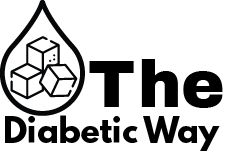[ad_1]
Diabetes has emerged as one of the most pressing public health challenges in the United States. With millions affected, the need for effective diabetes prevention strategies is more critical than ever. The American Diabetes Association (ADA) plays a pivotal role in addressing this epidemic by promoting awareness and implementing actionable prevention strategies. This blog will explore how the ADA transitions individuals from awareness to proactive measures in diabetes prevention and the significant initiatives they undertake to combat this chronic disease.
The Importance of Diabetes Awareness in Prevention
Raising awareness about diabetes is the cornerstone of effective prevention strategies. The American Diabetes Association has been at the forefront of this campaign for decades, striving to inform the public about the risks, symptoms, and complications associated with diabetes. Awareness campaigns are crucial since many individuals with prediabetes or type 2 diabetes are unaware of their condition until serious health complications develop. By focusing on education and outreach, the ADA empowers people with the knowledge necessary to make informed health choices.
The ADA utilizes various platforms to spread awareness, from social media campaigns to community events, aiming to reach diverse populations. Their initiatives include informative websites, educational pamphlets, and workshops that highlight diabetes risk factors and prevention measures. One of the key strategies is the emphasis on the importance of regular medical check-ups, where screenings can lead to early detection and enable timely intervention. Without awareness, prevention becomes challenging; hence, the ADA’s efforts in this area are fundamental in turning knowledge into action.
Community Engagement: A Pillar of Diabetes Prevention
Community involvement is essential when it comes to diabetes prevention. The American Diabetes Association invests significant resources into community-based programs that bring together individuals at risk of developing diabetes. These programs often include lifestyle modification courses, nutrition workshops, and physical activity sessions tailored to meet the needs of local populations. By engaging communities directly, the ADA ensures that prevention strategies resonate with individuals on a personal level, increasing the likelihood of behavioral changes.
The ADA’s programs, such as the Diabetes Prevention Program (DPP), have garnered attention for their effectiveness. The DPP is a structured lifestyle intervention designed to help participants with prediabetes reduce their risk of developing type 2 diabetes. Participants learn about healthy eating, physical activity, and behavior change strategies over the course of a year. The success rate is impressive, with studies showing that lifestyle changes can reduce the risk of diabetes by as much as 58%, making community-driven programs an invaluable resource in the fight against diabetes.
In addition to direct programs, the ADA collaborates with local organizations, schools, and healthcare providers to amplify their reach. By fostering partnerships within communities, they can tailor prevention strategies to the specific needs of the population, ensuring that resources are allocated effectively. This localized approach not only raises awareness but also turns that knowledge into actionable steps that individuals can take to improve their health.
The Role of Education in Diabetes Prevention
Education is a crucial element in the American Diabetes Association’s strategy for diabetes prevention. Through a wealth of resources, the ADA provides information tailored to various audiences, from healthcare providers to individuals at risk. Their educational initiatives aim to demystify diabetes, making the condition more understandable and manageable. This empowerment through education is essential, as informed individuals are more likely to engage in proactive health behaviors.
The ADA develops comprehensive manuals, online courses, and workshops that cover topics such as nutrition, exercise, and glucose management. Healthcare professionals are also targeted through educational programs that emphasize the importance of prevention in primary care settings. By equipping healthcare providers with the latest research and tools for educating their patients, the ADA creates a ripple effect that reaches countless individuals in need of guidance.
Moreover, the ADA continuously updates their educational materials based on the latest scientific research and health trends. This commitment to evidence-based information ensures that their programs remain relevant and effective. By fostering a culture of continuous learning and adaptation, the ADA stands as a reliable resource for diabetes education, reinforcing the idea that prevention begins with knowledge.
Advocacy Efforts: Policy Changes for Diabetes Prevention
Advocacy is another critical component of the American Diabetes Association’s efforts in diabetes prevention. The ADA works tirelessly to influence public policy, aiming to increase funding for diabetes research and prevention programs. This advocacy not only raises awareness about the importance of diabetes prevention at the governmental level but also ensures that resources are allocated to programs that effectively combat the disease.
The ADA identifies key areas where policy changes can have a significant impact, such as increasing access to diabetes screening and preventative services in healthcare. They lobby for initiatives that encourage health insurance plans to cover diabetes prevention programs, making them more accessible to those at risk. By mobilizing healthcare providers and individuals to advocate for these changes, the ADA creates a groundswell of support that drives meaningful action at various levels of government.
In addition to advocating for healthcare-related policies, the ADA also addresses social determinants of health that contribute to diabetes prevalence. They work towards policies that promote healthy food options, encourage physical activity, and improve healthcare access in underserved communities. By addressing these systemic issues, the ADA not only fights against diabetes but also seeks to improve the overall health of the population.
Utilizing Technology for Enhanced Diabetes Prevention
In our digital age, technology plays an increasingly important role in health education and disease prevention. The American Diabetes Association embraces technology to enhance their outreach and educational efforts. By leveraging digital platforms, they distribute information and resources more efficiently, ensuring that people have access to vital health tools at their fingertips.
One of the ADA’s significant technological advancements is their online diabetes prevention program, which offers participants a flexible option for accessing education and support. This virtual format accommodates individuals’ busy schedules while providing comprehensive lifestyle modification strategies. Moreover, the ADA utilizes mobile applications that help users track their food intake, physical activity, and blood glucose levels, empowering them to make data-driven decisions about their health.
Another remarkable initiative is the ADA’s utilization of telehealth services, which allow healthcare providers to deliver diabetes prevention counseling remotely. This approach is particularly advantageous for individuals in rural areas or those with mobility issues. By integrating technology into diabetes prevention efforts, the ADA not only makes resources more accessible but also encourages continuous engagement and accountability among participants.
Overcoming Barriers to Diabetes Prevention
While the American Diabetes Association has made significant strides in diabetes prevention, challenges still exist. Addressing barriers such as socioeconomic factors, cultural differences, and lack of access to healthcare resources is essential for effective diabetes prevention campaigns. The ADA recognizes these obstacles and actively works to create inclusive programs that cater to diverse populations.
Collaboration with local community organizations helps the ADA reach individuals who may feel marginalized or underserved. By engaging these populations, the ADA develops culturally appropriate resources that resonate with their specific needs. Additionally, they promote awareness of local available resources, such as access to nutritional counseling and exercise programs, which can make a tangible difference in diabetes prevention efforts.
Furthermore, the ADA works tirelessly to combat misinformation about diabetes, which can be a significant barrier to effective prevention. Providing accurate information through their educational initiatives combats myths and misconceptions, enabling individuals to make informed decisions about their health. By addressing these barriers head-on, the ADA encourages broader community participation and collective action in diabetes prevention.
Conclusion: A Call to Action for Diabetes Prevention
The American Diabetes Association plays an indispensable role in overseeing the transition from awareness to action in diabetes prevention. Their multifaceted approach, encompassing education, community engagement, advocacy, and the utilization of technology, has proven effective in combating the diabetes epidemic. However, the fight is far from over, and collective action is required from individuals, communities, and policymakers alike.
As we move forward, it’s essential to recognize the value of each person’s contribution to diabetes prevention. Engaging in preventive measures, advocating for policy changes, and supporting community programs are all critical steps in curbing the diabetes epidemic. Together, with the guidance and resources provided by organizations like the ADA, we can cultivate a healthier future and reduce the impact of diabetes on American lives. Everyone has a role to play in this critical mission, and now is the time to take action.
[ad_2]






















